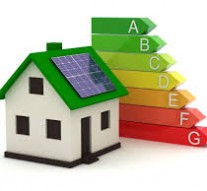
Energy efficiency: MEPs vote new labels on home appliances
Energy 7 July 2016MEPs voted a EU Commission proposal and called for new, toughter labes showing the energy efficiency of household appliances.
On Wednesday, while voting on a EU Commission proposal, MEPs stated that a new, tougher, A to G scale showing the energy efficiency of household appliances are needed and call for their introduction in order to keep pace with technological progress.
MEPs argued that setting tougher requirements will incentive even further improvements in energy efficiency, considering that most appliances on the market currently meet the “class A” requirements first set in 2010 and even more pluses (A+, A++, A+++) have being added meanwhile.
“Today´s vote gave new life to the Energy Efficiency Label, making the labelling system stronger, safer, clearer and future-oriented. Innovations such as the database, the Quick Response code and above all the reference to smart appliances set the framework for a new ´energy label 2.0´” said rapporteur Dario Tamburrano (EFDD, IT) after the vote, “I am sure that the negotiations with the Council will further enhance its potential to serve at the best the interests of European citizens and become one of the most powerful tools to achieve our EU energy efficiency goals.”
Energy efficiency labelling legislation applies to energy-related products which have a significant direct or indirect impact on the consumption of energy.
Second-hand products and means of transport whose motor stays in the same location during operation, such as elevators, escalators and conveyor belts are exempted.
The proposed update was approved by 580 votes to 52, with 79 abstentions. Now, in order to start negotiations with the Council on the final form of the legislation, the file has been referred back to the Industry, Research and Energy Committee.
Future rescales
The amended text says that, depending on product type, the introduction of “Rescaled labels for existing product groups” should take place within 21 months and 6 years of the entry into force of the legislation, so as “to ensure a homogenous A-G scale”.
As for future rescales, their validity period should be 10 years at least. Furthermore they should be activated either when 25% of products sold on the EU market fall into the top energy efficiency class A or when 50% of these products fall into the top two energy efficiency classes A+B.
At the moment of introducing new rescaling or labelling, class A should be empty at the start, say MEPs, while, for those product groups showing rapid technological progress, classes A and B should be vacant.
In case energy classes F and G were not permitted for certain product groups, these should be shown on the label in grey, and the standard dark green to red spectrum of the label should cover A-E, they add.
Information on Energy efficiency and a product database
Information about the energy efficiency class of the product model and its absolute consumption in kWh should be provided in the label, states the text, and be displayed per year or per “any relevant period of time”.
A “product database” should be set up, MEPs advocate. This database should consist of a consumer website, providing information on each product, as well as a “compliance” interface available in the country’s languages, namely an electronic platform supporting the work of national market surveillance authorities.
Testing methods and environment
Regarding the testing methods and environment, MEPs say that “both for suppliers and market surveillance authorities should be as close as possible to the real-life usage of a given product by the average consumer.”
They also asked the European Commission to publish EU “transitional measurement and calculation methods in relation to those product-specific requirements.”
For more information on Energy Efficiency, read “Smart housing: a threefold answer for energy savings” and “An Energy Efficiency Revolution.”



